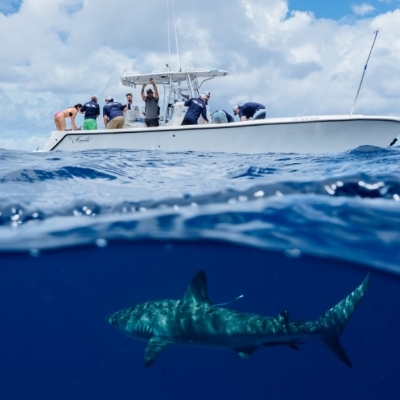Background:
How might we broaden our perception of non-human communication? Animals employ a staggering range of acoustic strategies, including signaling across species boundaries (Kirshenbaum 2023). Humpback whales make intuitively pleasing remote analogues with songs that are “ethereal and other-worldly” (Payne 1985). Humpbacks possess a diverse and largely undeciphered lexicon of social and percussive signals (Dunlop et. al., 2007; Fournet et. al., 2015). Investigations into humpback whales are intended to broaden our visualization of alien signal configuration. This includes SETI (Search for ET Intelligence), which involves humpback call classification and analysis using information theory (Doyle et. al., 2011); METI (Messaging ET Intelligence), which involves dynamic playbacks intended to establish whale-human “conversations” (McCowan et. al., 2023) and RETI (Responding to ET Intelligence), which involves fielding and replying to candidate signals -bubble rings and other effervescent structures- (Sharpe et. al., 2022).
Mission:
Passive acoustic recordings will be used to examine humpback whale non-song vocalizations (“social sounds”). Humpback whales produce many non-song vocalizations that have been structurally well documented (Payne and McVay 1971, Cerchio and Dahlheim 2001, Dunlop et al. 2007, Fournet et al. 2015). While it is presumed that these calls have a communicative function (Dunlop et al. 2008, Dunlop et al. 2010), little is known about their meaning and information content (Edds-Walton 1997, Tyack 2009, Dunlop et al. 2013). This study will record non-song vocalizations, together with observations of foraging behaviors and social interaction, and under a variety of environmental conditions to further characterize the diversity of non-song vocalizations and infer their function. As well, acoustic recordings will be used to test hypotheses concerning the production and function of feeding calls produced by humpbacks during cooperative feeding events. Playbacks will be used to further examine the function of HBW vocalizations by testing whether certain recorded vocalizations (e.g., non-song vocalizations, feeding calls, song phrases) elicit a behavioral response (approach, avoid, join, depart, etc.) in targeted whales. Insight into vocal meaning, gained through controlled playback experiments, can assist with stranding operations (Deeke 2006) as exemplified by playbacks of Alaskan feeding calls to lure a wayward humpback out of the Sacramento River (Baker 1985). Furthermore, these experiments can identify "positive controls" - sounds that elicit a predictable vocal response – that can be employed in advance of seismic exploration, tactical sonar, and other industrial activities to maximize whale detectability (Gibbs & Melvin 1993, SERDP 2009).
Application:
Studying humpback whale acoustics serves several important purposes:
Communication and Social Behavior: Humpback whales are known for their complex vocalizations, which are believed to play a crucial role in communication and social behavior. By studying their acoustic signals, researchers can gain insights into how whales interact, communicate, and form social bonds.
Migration and Navigation: Humpback whales undertake long-distance migrations between feeding and breeding grounds. Acoustic studies can help researchers understand how whales use sound to navigate during these migrations, including how they perceive and respond to environmental cues such as ocean currents and geomagnetic fields.
Population Monitoring: Acoustic monitoring can be used as a non-invasive method to study humpback whale populations. By analyzing the vocalizations of whales in different regions and at different times of the year, researchers can estimate population sizes, track changes over time, and identify important habitats for conservation.
Environmental Monitoring: Humpback whale vocalizations can also provide valuable information about the marine environment. Changes in the frequency, duration, or intensity of whale calls may indicate shifts in prey abundance, oceanographic conditions, or anthropogenic disturbances such as ship noise or ocean pollution.
Conservation and Management: Understanding humpback whale acoustics is essential for effective conservation and management efforts. By identifying areas of high whale activity, policymakers can implement measures to mitigate human impacts such as ship strikes, entanglement in fishing gear, and habitat degradation.




